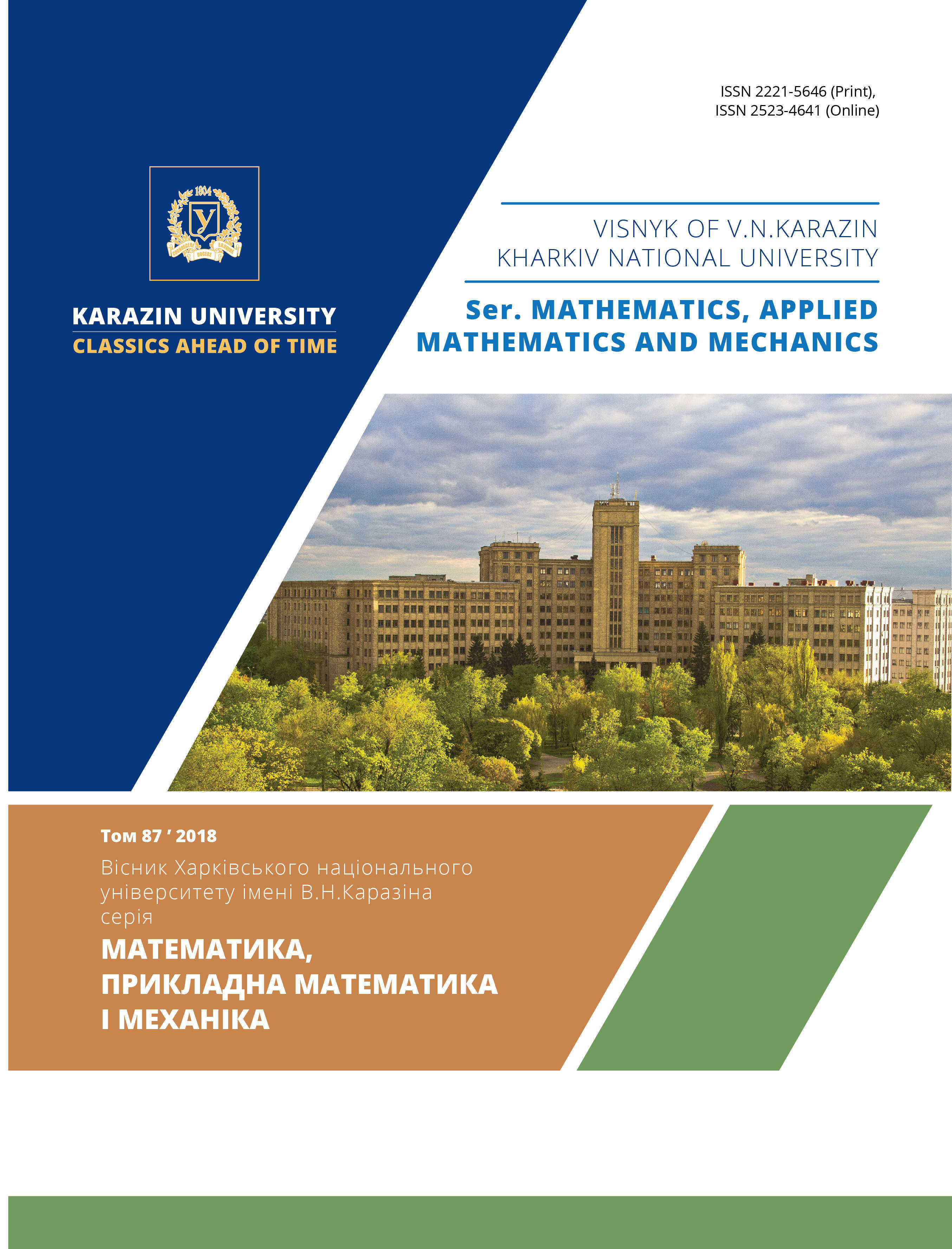Mathematical model of liver regeneration processes: homogeneous approximation
Abstract
This paper deals with the rules and the mechanisms regulation of liver regeneration. The generalized mathematical model was developed. This model has a explicit dependence on the control parameters. To solve this problem there were accepted such assumptions: homogeneous approximation; small toxic factors.
Downloads
References
B. Christ, U. Dahmen, K-H. Herrmann, M. Konig, JR. Reichenbach, T. Ricken, J. Schleicher, L. Ole Schwen, S. Vlaic, N.Waschinsky. Computational Modeling in Liver Surgery. Frontiers in Physiology. - 2017. - Vol. 8. Article 906. - P.1- 26. DOI: 10.3389/fphys.2017.00906
Virtual Liver Network: A major national initiative funded by the German Federal Ministry for Education and Research, 2010- 2015. - http://www.virtual-liver.de/
LiSyM - Liver Systems Medicine: Research network of German centers and institutions, 2016- 2020. - http://www.lisym.org/
D. Cook, B. A. Ogunnaike, R. Vadigepalli. Systems analysis of non-parenchymal cell modulation of liver repair across multiple regeneration models. BMC Systems Biology, - 2015. - Vol. 9:71. - P.1- 24. DOI: 10.1186/s12918-015-0220-9.
Ye. Dayong, Zh. Minjie, V. Athanasios. Computational Modeling in Liver Surgery. IEEE Transactions on Systems, Man, and Cybernetics. - 2017. - Vol. 47. No. 3. - P. 441- 462.
M. Hwang, M. Garbey, S. A. Bercali, R. Tran-Son-Tay. Rule-Based Simulation of Multi-Cellular Biological SystemsA Review of Modeling Techniques. Cellular and Molecular Bioengineering. - 2009. - Vol. 2(3). - P. 285- 294.
H. Holzhutter, D. Drasdo, T. Preusser, J. Lippert, A.M. Henney. The virtual liver: a multidisciplinary, multilevel challenge for systems biology. WIREs Syst Biol Med. - 2012. - Vol. 4(3). - P.221- 235.
K. Jungerman. Metabolic zonation of liver parenchyma. Semin Liver Dis. - 1988. - Vol. 8. - P. 329- 341.
K. Jungermann, T. Kietzmann. Oxygen: modulator of metabolic zonation and disease of the liver. Hepatology. - 2000. - Vol. 31. - P. 255- 260.
MR. Alison, S. Islam, S. Lim. Stem cells in liver regeneration, brosis and cancer: the good, the bad and the ugly. J Pathol. - 2009. - Vol. 217(2): - P. 282- 298.
KS. Zaret, M. Grompe. Generation and regeneration of cells of the liver and pancreas. Science. - 2008. - Vol. 322. - P. 1490- 1494.
M. Tanaka, T. Itoh, N. Tanimizu, A. Miyajima. Liver stem/progenitor cells: their characteristics and regulatory mechanisms. J Biochem. - 2011. - Vol. 149. - P. 231- 239.
Y. Miyaoka, A. Miyajima. To divide or not to divide: revisiting liver regeneration. Cell Division. - 2013. - Vol. 8(1):8. - P.1- 12. DOI:10.1186/1747- 1028-8-8.
K. Mahmoodi, B. West, P. Grigolini. Self-organizing complex networks: individual versus global rules. Frontiers in Physiology. - 2017. - Vol. 8. Article 478. - P.1- 11. DOI:10.3389/fphys.2017.00478.
N. W. Watkins and others. 25 years of self-organized criticality: concepts and controversies. Space Science Reviews. - 2016. - Vol. 198(1-4) - P. 3- 44.
J. M. Cushing. Integrodierential Equations and Delay Models in Population Dynamics. Springer-Verlag Berlin Heidelberg. - 1977. - Vol. 20 - 196 p.
C. Hutchison, D. M. Glover. Cell Cycle Control. Frontiers in molecular biology. - 1995. - Vol. 10. - 304 p.
K. J. Barnum, M. J. O'Connell. Cell Cycle Regulation by Checkpoints. Methods Mol Biol. - 2014. - Vol. 1170. - P. 29- 40.
F. Marongiu et al. Hyperplasia vs Hypertrophy in Tissue Regeneration after Extensive Liver Resection. World Journal of Gastroenterology. - 2017. - Vol. 23(10). - P. 1764- 1770.
S. Fulda, A. M. Gorman, O. Hori, A. Samali. Cellular Stress Responses: Cell Survival and Cell Death. International Journal of Cell Biology. - 2010. - P. 1- 23.
Citations
Different strategies in the liver regeneration processes. Numerical experiments on the mathematical model
(2020) V. N. Karazin Kharkiv National University. Ser. Mathematics, Applied Mathematics and Mechanics
Crossref

This work is licensed under a Creative Commons Attribution-NonCommercial-NoDerivatives 4.0 International License.
The copyright holder is the author.
Authors who publish with this journal agree to the following terms:
1. Authors retain copyright and grant the journal right of first publication with the work simultaneously licensed under a Creative Commons Attribution License that allows others to share the work with an acknowledgement of the work's authorship and initial publication in this journal. (Attribution-Noncommercial-No Derivative Works licence).
2. Authors are able to enter into separate, additional contractual arrangements for the non-exclusive distribution of the journal's published version of the work (e.g., post it to an institutional repository or publish it in a book), with an acknowledgement of its initial publication in this journal.
3. Authors are permitted and encouraged to post their work online (e.g., in institutional repositories or on their website) prior to and during the submission process, as it can lead to productive exchanges, as well as earlier and greater citation of published work (see The Effect of Open Access).




